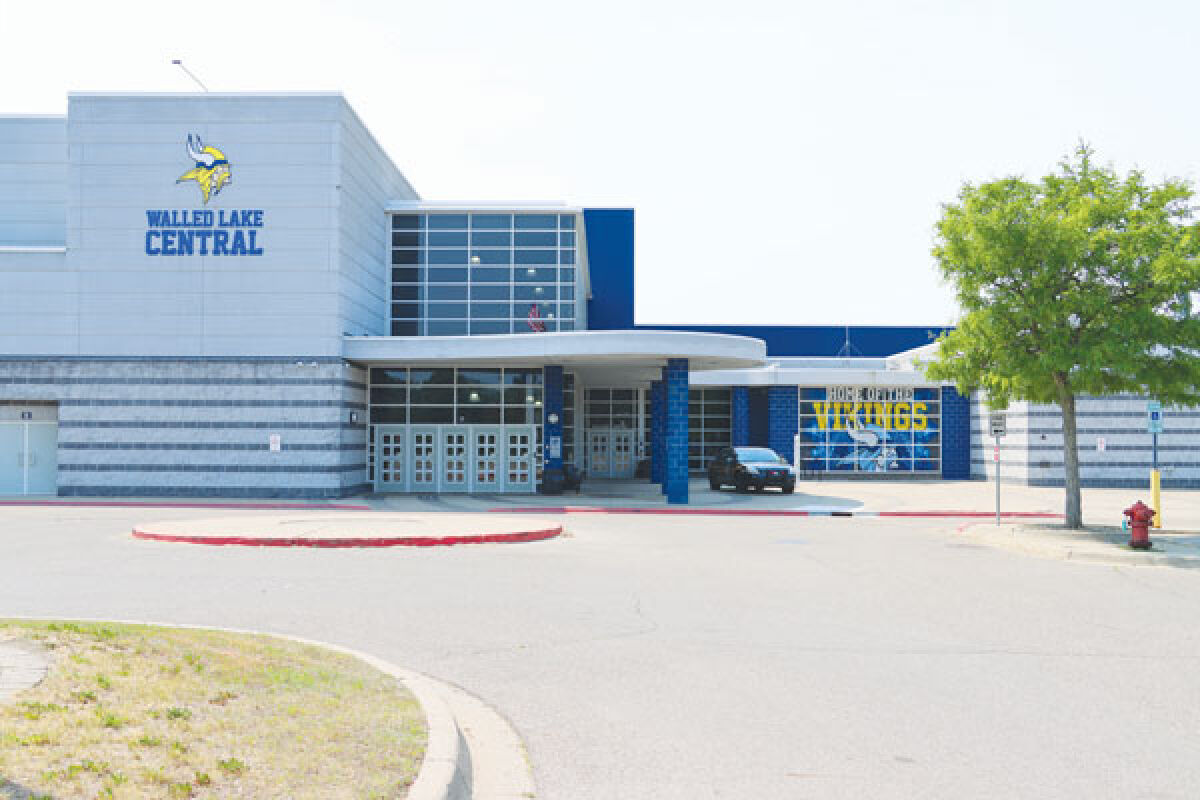WALLED LAKE — As part of a May 7 ballot initiative, voters who reside within the Walled Lake Consolidated Schools District are in position to decide whether or not to approve an approximately $250 million bond proposal.
The exact amount of the bond is $250,085,000, which, if approved, would go toward a series of projects.
According to the district, money from the bond would focus on safety and security, technology, programs, infrastructure, and a new “state-of-the-art” elementary school in Wixom.
According to the district’s website, notable projects of the bond proposal include fiber optic network updates across the district, security updates in every building, public address system improvements, renovated performing art spaces, athletic facilities upgrades, electrical and mechanical upgrades, digital signage at all schools, paving and roofing projects across the district, elementary playground improvements, a new elementary school, and upgrades to Walled Lake Central and Walled Lake Northern high schools, specifically in regard to learning environments to support enhanced programs and student opportunities.
According to Superintendent John Bernia, a $316 million bond proposal passed in 2019. Prior to that, bond proposals passed in 2013, 2004, 2000 and 1996.
Bernia said that the 1996 bond has been paid off, and the 2000 bond is about to be paid off.
With that debt going away, the district opted to propose “replacing it with this new investment where we would gain some capital,” Bernia said.
“For about the past 20, 30 years, when our bond rate has fallen off in Walled Lake, we’ve gone back to the voters and asked them to extend the debt millage, and what that’s allowed us to do over time is preserve our general fund to pay for things like our employees, and it has allowed us to issue bonds to do capital improvements,” Bernia said. “We’ve gone back to the community and said, ‘Would you be willing to extend the tax rate?’ So, we’re back at that point again.”
Bond proposals are a way for school districts to get authorization to borrow money for capital expenditures, with voter-approved funds allowed to be spent on new construction, additions, remodeling, site improvements, athletic facilities, playgrounds, furnishings, equipment, buses and technology, according to the district’s website. School districts collect property taxes from residents to pay for the loan payments on bonds.
Bernia compared them to a mortgage, as they are paid down over a period of time. Residents are still paying taxes from previous bonds that voters approved.
“We still have the bond from ‘04, ‘13, ‘19, and then if the voters approve it, ‘24,” he said. “Bond money can be used for capital improvements, construction (and) renovations. … Bond money cannot be used for salaries, benefits or anything towards our employees. It’s capital money.”
The district’s site states that residents within the district are currently paying 4.13 mills. If the proposal passes, the millage rate will still be reduced to 4.05 due to retiring debt. If the proposal fails, Bernia said, the rate would be reduced to 2.5 mills.
For residents who own a home valued at $200,000, with a taxable value of $100,000, that means they would pay $405 per year if the bond passes, according to the district. A mill is $1 per $1,000 of taxable value. On a home with $100,000 of taxable value, 1 mill is $100 in property taxes.
“If your home has a taxable value of $100,000, moving from 4.13 to 2.5 (mills) saves … give or take … $165 a year,” Bernia said. “When you’re a low-tax district like we are, that decrease from 4.13 to 2.5 doesn’t decrease your tax bill all that much.”
Bernia addressed the topic of going for a bond during a time of inflation.
“I (have) a household just like everybody else and everything’s become more expensive, whether it’s gas or groceries or getting a haircut, but what I would say to everybody is that this is a key investment in maintaining the value of your property, and it’s a key investment in maintaining the viability of your community,” he said.
The cost to the district for having a ballot proposal in May is approximately $200,000, according to the district’s website. The site states that the cost is “less than a 1/10 of 1% of the entire bond issue.”
The district’s site also provided information about how much debt is left to be paid off from previous bonds.
“After May of 2024, there is $307,355,000 with the last bond estimated to be paid off in 2049,” the site states.
With the decision having been made to place the proposal on ballots, Bernia understands that it is now in voters’ hands.
“What I would really love to see is (for) the voters to evaluate those two options and to vote accordingly,” he said. “My team and I, we’re ready for either option, and we’re ready to take on and do the work on behalf of the community that they want us to do.”
The district’s Board of Education had this to say about the proposal on the website: “As we look to the future, the Walled Lake Consolidated Schools’ Board of Education continues to ensure that our facilities and programs reflect excellence. Just as houses and businesses maintain their facilities and update technology, so has our school system.”
 Publication select ▼
Publication select ▼























